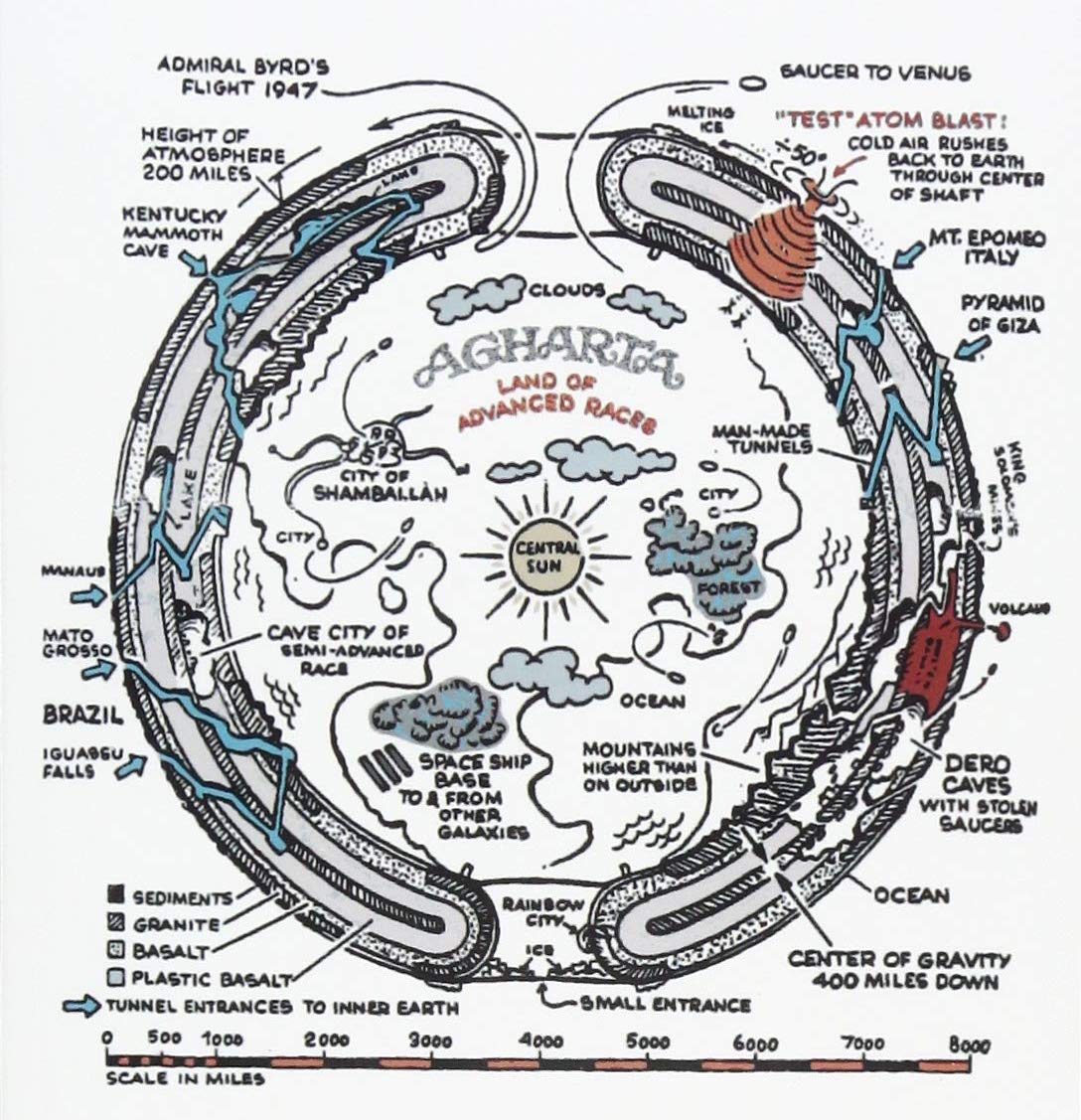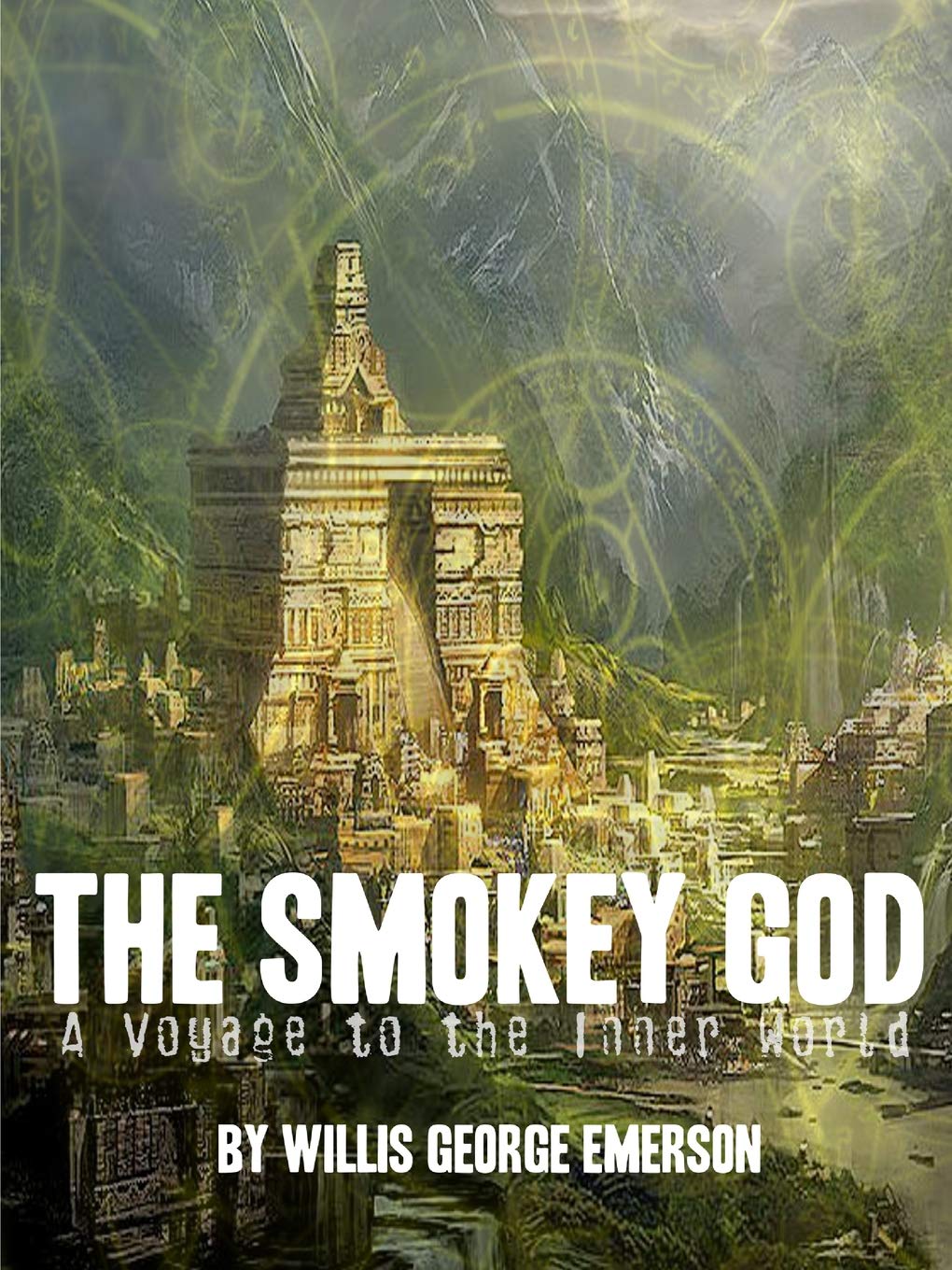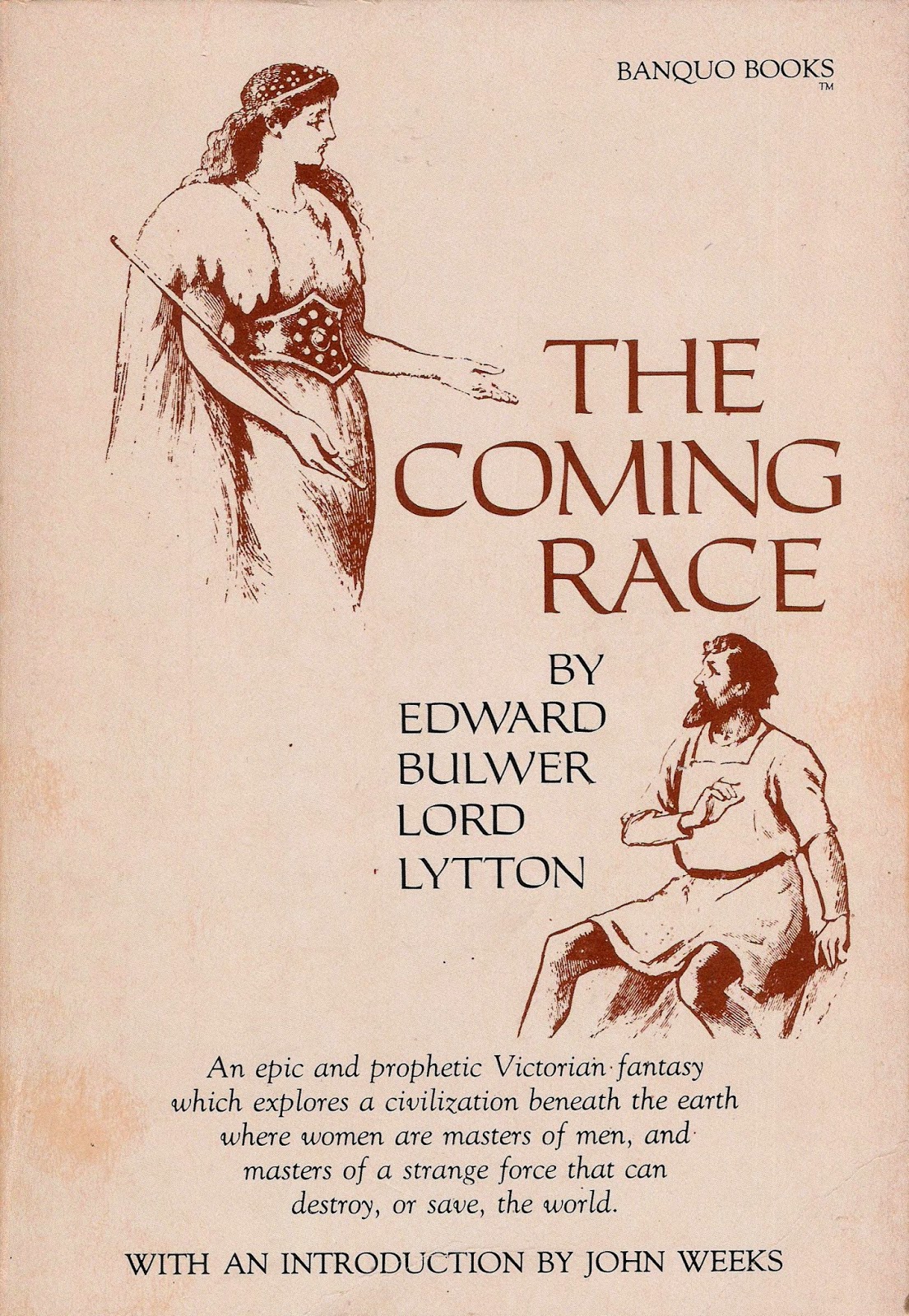The topos of underground civilizations seems to be recurrent in the history of human thought, whether it is myth, folklore, esoteric knowledge, alternative reality or "simple" science fiction, to the point that sometimes it is difficult to label the various versions of the topos in a rather category. than in the other. Here we will deal with the variations of the topos in science fiction literature between the nineteenth and twentieth centuries.
di Marco Maculotti
originally published in "Dimensione Cosmica" n. 2, Tabula Fati Editions, Spring 2018
cover: Unknown artist, "Inferno", 1800
Il topos concerning the existence of civilizations residing in the underground world, within the terrestrial globe, has always tickled the human imagination. Since the dawn of time, legends about civilizations that have now disappeared - or at least disappeared have come down to us from practically every tradition in the world. from the surface, or with reference to our dimensional plane of existence - that they would take refuge, to escape extinction, underground or in a another dimensional plane, superimposed on ours although difficult to reach.
But where does the myth and begins what we define today science fiction? From the underground journeys of Jules Verne [1] need EA Poe [2] to the dark mythology of the "Great Ancients" from HP Lovecraft [3], from the alleged access in the "Hollow EarthFrom Admiral Richard Byrd [4] to the oriental legends of Agharti e Shamballa of which they handed down JA Saint-Yves, F. Ossendowski and R. Guénon [5], up to the belief in the survival of the ancient Lemurian race within Mount Shasta and the typically post-modern paranoia of the so-called "Mystery Shaver- an extremely clear picture emerges from all this cultural sphere of the last centuries, which leads us to consider how much beliefs of this kind have always been rooted in the depth of the human psyche. In other words, the topos of underground civilizations seems recurrent in the history of human thought, whether it is myth, folklore, esoteric knowledge, alternative reality or "simple" science fiction - to the point that sometimes it is difficult to label the various versions of the topos in one category rather than another. Here, however, we will deal only with the narrative sphere of the last two centuries.

There are not a few science fiction writers who have used the topos of underground civilizations, both in the field of utopian literature and in that of satirical literature. Still other authors, referring primarily to the world of myth and ancient religions, have written stories with a modern slant but ancestral suggestions.
We begin this exposition by mentioning the cycle of Pellucidar di Edgar Rice Burroughs (20s), whose appear the Mahar [6], "race of giant reptiles [...] extremely intelligent" who communicate with each other by projecting thoughts "into the fourth dimension". The Mahar race is made up solely of females: males were once omnipotent but, after females gradually assumed dominance, they began experimenting with eugenics and eventually discovered a method to fertilize eggs independently. Thus, when the male completely lost his reproductive role, he was no longer needed. The Burroughs cycle had the merit of imagining a world - unfortunately very current today - in which advances in science coincide with a fatal rebellion against the state of nature, which also takes the form of a war between the sexes.

It can be suspected that much of the themes Burroughs dealt with in his cycle were taken from the novel Mizora: in Prophecy (1880) by the writer Mary Lane, set in an underground world populated only by blond women and "vegetarians for so long that every animal species is now extinct". After one of them had discovered the "Secret of Life" - a method of artificial fertilization of the egg - the females had gathered at a conference deciding not to father any more male children, now completely useless in the social economy. Eventually, with the refinement of eugenics, they had come to eliminate a number of "undesirable" characteristics and Mizora had become a nation of uniformly blond, beautiful and healthy women. Like this, what initially might have appeared as an ideal utopian society, is transformed in a short time into the worst dystopia of both gender and race.
On the other hand, it is completely different The Smokey God di Willis George Emerson, published in 1908, which introduces us to a race of giants located underground near the North Pole, who worship their little sun, called the "Smoky God" because its glow is veiled by the haze of the inner world. The latter is represented as a real paradise as well as the cradle of humanity: the underground world is equivalent, in this novel as in the ancient esoteric legends, to the "abode of the elect". The most important legacy of Emerson's work is therefore the idea of a "perfect" race of giant sages who happily live in a heavenly subsoil, while the rest of humanity survives precariously on the surface in various states of "degeneration". In all likelihood, Emerson was inspired by the Gordon Pym by EA Poe, in whose conclusion the narrating voice, before plunging into the abyss of Maelstrom, sees appear
“A human figure wrapped in a shroud and of far greater proportions than any other inhabitant of the earth. And his skin was the perfect white of snow. "

The myth of an ancestral and more advanced humanity is also the main theme of The Goddess of Atvatabar di William R. Bradshaw (1892). The inhabitants of Atvatabar they possess a much more sophisticated technology than their surface epigones and employ "magneticity" as a source of energy. They are also distinguished by a complex and peculiar system of religious beliefs, based on the faith in Harikar, the "Universal Human Soul", which devotees adore forming mixed couples known as "soul mates" and keeping themselves chaste in order to channel their energies: a literary invention that is so influenced by the Indian conception ofAkasha as of the tantric techniques of "seed retention" for magical purposes.
An ideal humanity of similar characteristics is also found, going further and further back, in The Coming Race (1871) by the English occultist Edward Bulwer Lytton: here, the inhabitants of the subsoil belong to the Ana race, which migrated into the maze of internal caves following a flood that occurred thousands of years ago. Again, the aforementioned proto-humanity has developed a much more advanced technology than the surface world, based on the use of a force obtained from the atmosphere called Vril [7]
“An energy that can destroy like lightning; however, otherwise applied, it can strengthen life, heal and preserve. "
The fact that this energy was available to almost all the inhabitants of the underworld led them to perpetual peace: no one would in fact make a destructive use of it anymore, as such use would expose them to an equally destructive counter-reaction by others. affiliates. Behind this, Bulwer-Lytton also intended to operate a satire on the "irritating democratic pretensions" and "patriotic fanaticism" of many Americans, «Accustomed since childhood to the daily use of revolver". Epperò the novel also allowed the author to cast a satire on feminism, since he described the Gy-ei, women of the Vril-ya, as caricatures of nineteenth-century feminists.

But in The Coming Race there is much more: there is an underlying idea that, although the civilization of the underground people initially appears as more evolved and peaceful, it is ultimately static and dull. For centuries it has not produced artistic, literary and musical works, precisely because the conflicts that generate great art have been completely eliminated; there is peace and beauty, but no excitement. The novel's protagonist, once back in the surface world, warns his fellow men of the impending danger: the "Ventura Race" will one day conquer the outside world with his rods charged with Vril, importing one's lifestyle to the whole of humanity. He prayed "devotedly […] that millennia may pass before our inevitable annihilators emerge into the light of the sun."
Of the novels written in the twentieth century about the "internal world," one of the most memorable and moving was written not as a satirical or utopian pamphlet, but as a kind of modern fairy tale, and with this we close our literary investigation. In The Green Child (1935) of Herbert Read, inspired by a XNUMXth century folklore legend [8], let's go to the discovery of an "immense underground city, strange and beautiful, immersed in a luminous atmosphere" of "perennial light". Here he lives the "Green People" - evidently a twentieth-century update of the "secret people" of the gods Fairies - who, unlike the surface inhabitants, does not consider freedom in terms of elevation and progress but rather, meditating on the perfection of the mineral kingdom, aspires to become part of it in order to escape the sufferings of becoming:
"When at last [their body] was petrified, it was [...] transferred [...] to the halls of the dead, caverns where alabaster corpses lay one on top of the other in dense rows awaiting supreme bliss, crystallization . Once the body, no longer human in appearance, but rather resembling a pillar of salt, had assumed the mathematical precision and perfect structure of the crystal, it was believed to have reached final immortality. […] So long as they claimed that nothing was more pleasing to God than offering one's body entirely to the Earth, in intimate union with it. This was their highest desire: to be one with the physical harmony of the planet. »
Even the protagonist Olivero, who has become a hermit, follows their example and, once dead, his corpse is led to the pit of petrifaction, where he lies in the arms of his beloved, who died at the same time as him. Together, they will become one huge, perfect, crystal.

Note:
[1] J. Verne, Journey to the Center of the Earth.
[2] EA Poe, Gordon Pym. Other stories by Poe that refer to the myth of the Hollow Earth (and in particular of the "Poli Cavi") are Manuscript found in a bottle e A descent into the Maelström.
[3] cf. especially HP Lovecraft, To the mountains of madness.
[4] cf. W. Kafton-Minkel, Underground worlds. The myth of the Hollow Earth. Mediterranee, Rome, 2012, pp. 245-249, 294, 298-299.
[5] The texts to which we refer there are: JA Saint-Yves, India mission; F. Ossendowski, Beasts, men, gods; R. Guénon, The King of the World.
[6] W. Kafton-Minkel, on. cit., P. 306.
[7] cf. also P. Bahn and H. Gehring, The myth of Vril. Settimo Sigillo, Rome, 2007.
[8] cf. W. Kafton-Minkel, on. cit., pp. 52-54.

3 comments on “Underworld civilization in science fiction fiction"